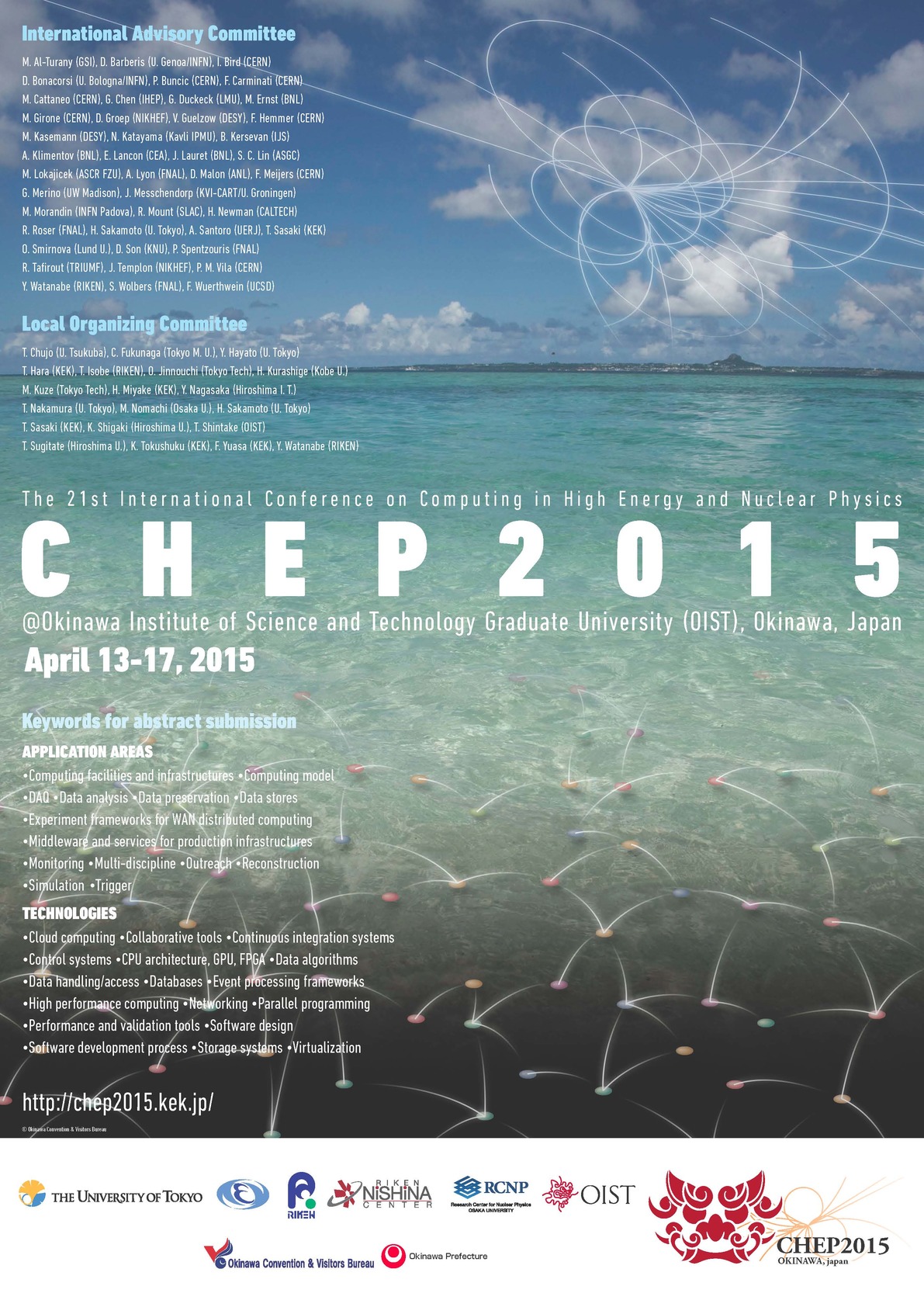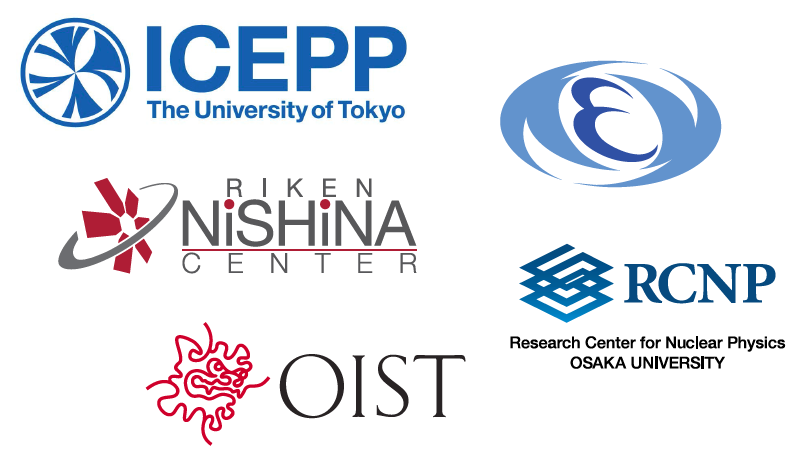Programs
The scientific program of CHEP2015 consists of plenary sessions with
invited oral presentations, a number of parallel sessions comprising oral
and poster presentations, and an industrial exhibition. The plenary sessions
occupy the four mornings and one afternoon (Thursday) and the parallel
sessions were held on Monday/Tuesday afternoons and in the morning of
Thursday.
Contributions are solicited in the form of abstracts and the Program
Committee, with the help of the International Advisory Committee, used
them to finalize the program.
Session Timetable
Paralell Tracks
- [Track 1] Online computing
DAQ and Trigger; development, design, architecture for filtering, reconstruction, etc. and use within experiments and facilities; evaluation and testing of such systems; parallelism, HPC, and accelerator use in such systems; event building and farm networks; compute farms for high-level triggering; configuration and run controls; describing and managing configuration data and conditions databases; online software frameworks and tools; online calibration procedures; remote access to (and control of) DAQ systems and experimental facilities. - [Track 2] Offline software
event generation, simulation and reconstruction; detector geometries, algorithms for physics analysis; tools and techniques for data classification and parameter fitting; event visualization and data presentation; frameworks for event processing; toolkits for simulation, reconstruction and analysis; event data models. - [Track 3] Data store and access
storage management; local I/O and data access; mass storage systems; object dictionaries; event stores; metadata and supporting infrastructure; databases; access patterns and caching strategies. - [Track 4] Middleware, software development and tools, experiment frameworks, tools for distributed computing
Grid middleware; software reliability, interoperability and security; experiment specific middleware applications; software testing and quality assurance; programming techniques and tools; software build, release, distribution tools and documentation; configuration management; Grid monitoring tools; mobile computing. - [Track 5] Computing activities and computing models
distributed computing aspects with focus on operations; distributed data processing experience, including experience with grids and clouds; workflows and data management in operations; distributed data analysis; experience with production and data challenges; experience with analysis using distributed resources; interactive analysis using distributed resources; monitoring of user jobs and data; global usage and management of resources; data preservation; data curation and long-term data reproducibility. - [Track 6] Facilities, Infrastructure, Network
hardware and benchmarks; fabric virtualization; fabric management and administration; local (LAN) and wide-area networking (WAN); private networks; collaborative systems: progress in technologies and applications; tele-presence and teleconferencing systems; experience in the use of teleconferencing tools. - [Track 7] Clouds and Virtualization
Cloud, virtual machine, container, volunteer computing technologies; frameworks and tools to exploit these technologies and environments; experiences in managing and using these technologies in production environments. - [Track 8] Performance increase and optimization exploiting hardware features
CPU/GPU architectures; tightly-coupled systems; GPGPU; hardware and benchmarking; concurrency; vectorization and parallelization; mathematical libraries; foundation and utility libraries; documentation.



